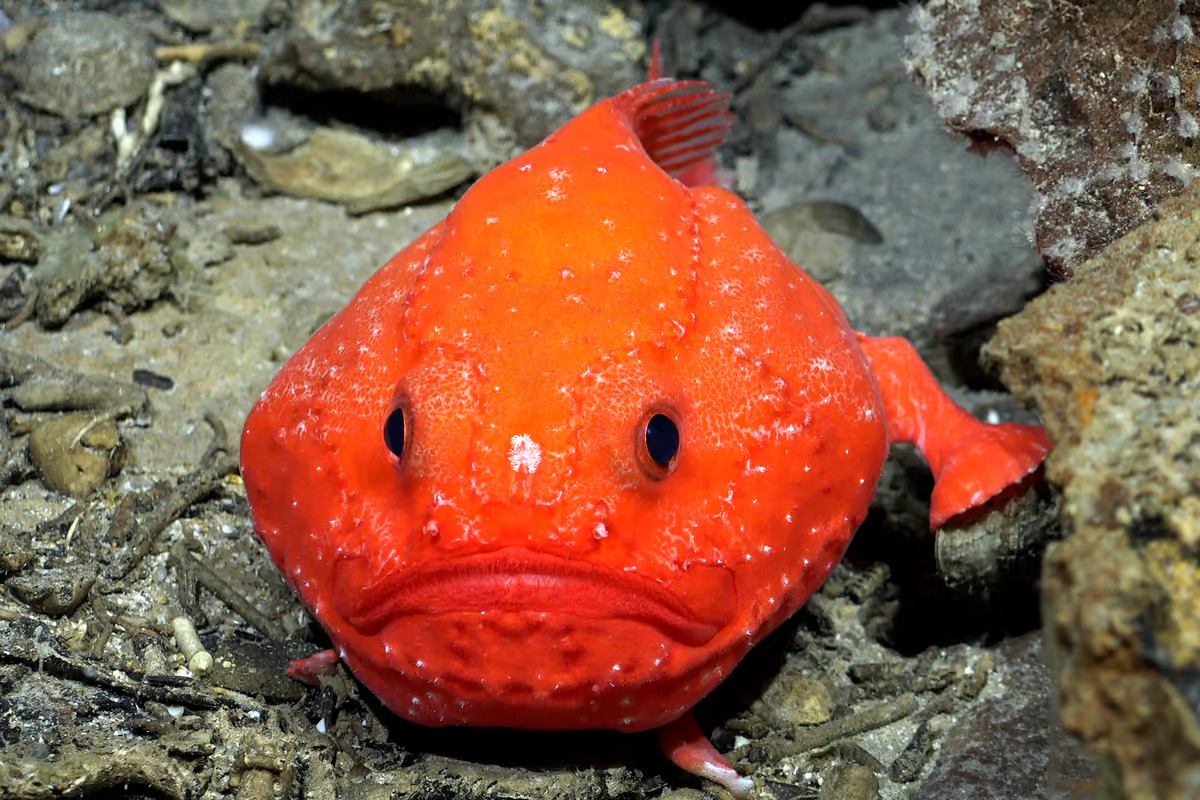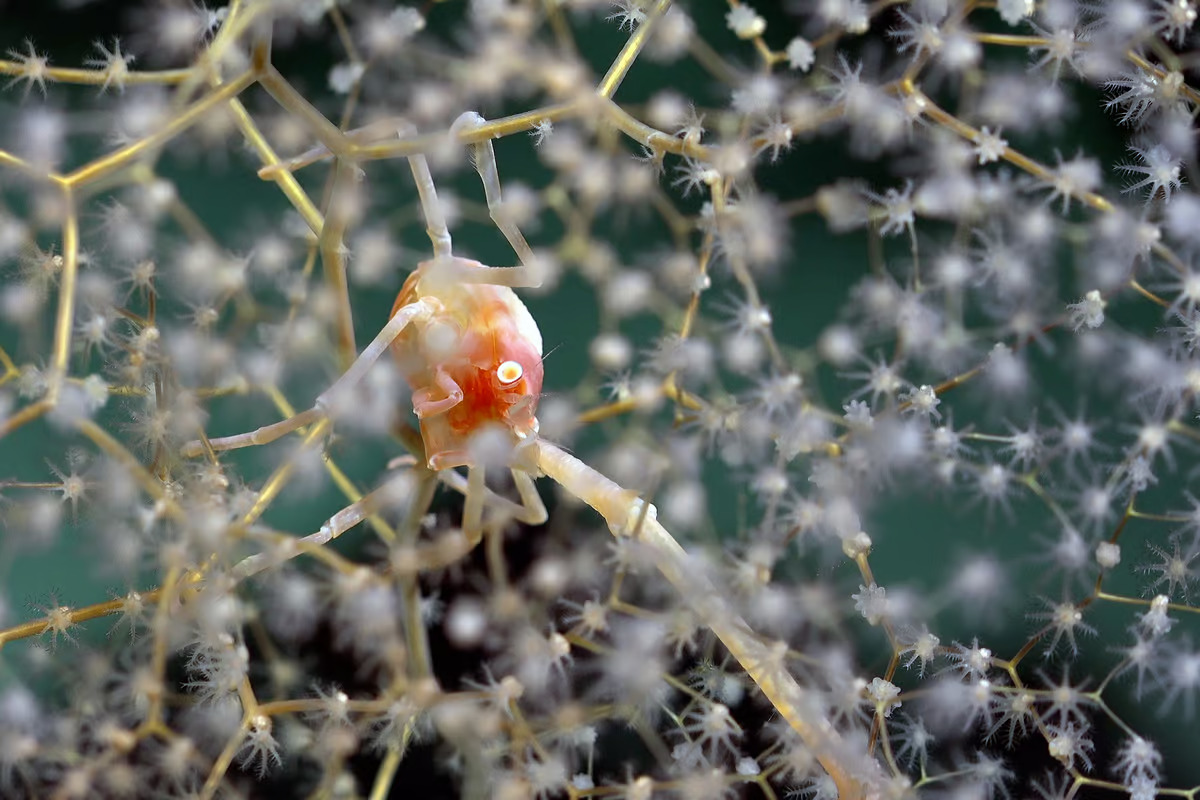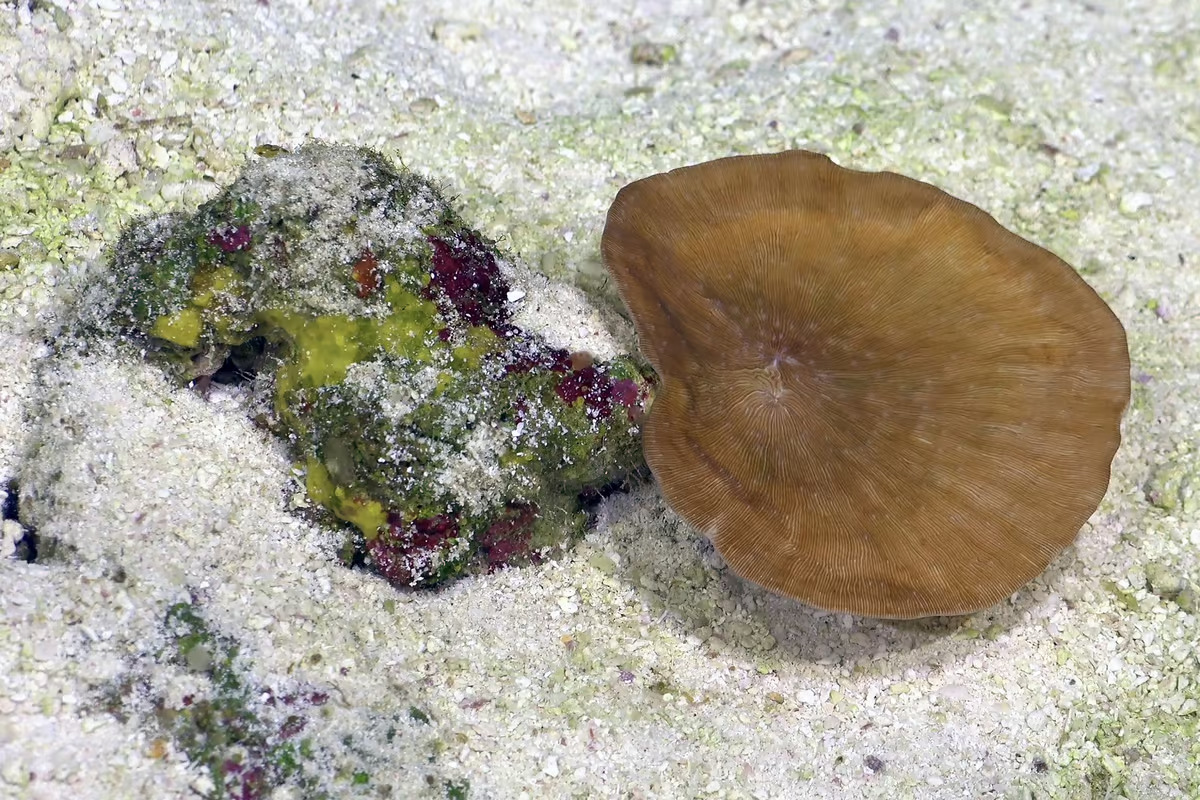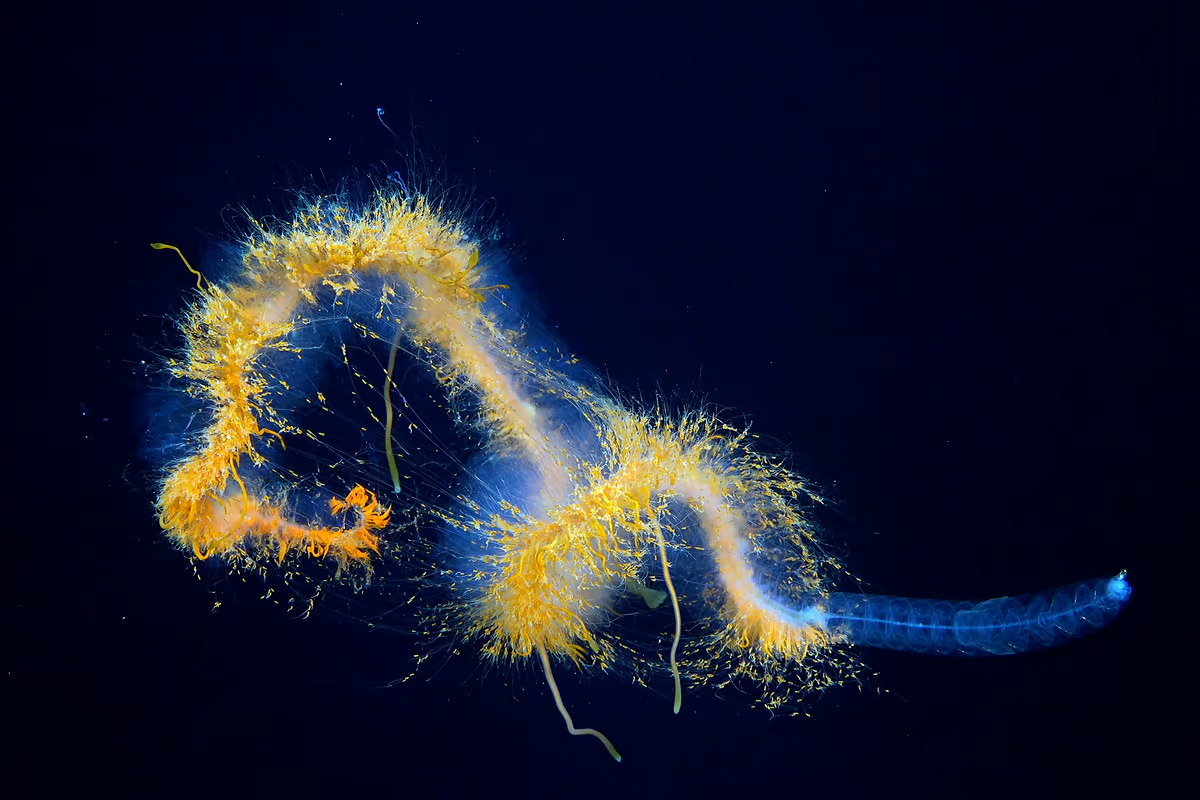 A Chaunax, a bony fish in the sea toad family, seen on the southwestern flank of Rapa Nui. ROV SuBastian/Schmidt Ocean Institute CC BY-NC-SA 4.0 View 14 Images. –
A Chaunax, a bony fish in the sea toad family, seen on the southwestern flank of Rapa Nui. ROV SuBastian/Schmidt Ocean Institute CC BY-NC-SA 4.0 View 14 Images. –
The Salas y Gómez Ridge is an underwater mountain chain off the coast of Chile. It and the neighboring Nazca Ridge stretch across 1,800 miles (2,900 km), which is roughly equivalent to the width of South America. The Salas y Gómez Ridge’s more-than-110 seamounts (underwater mountains) host incredible biodiversity, with some of the planet’s highest levels of marine endemism, which is when a species is only found in a single, defined geographic location.
While parts of the Ridge are protected within Chile’s jurisdiction, much of it lies in international waters. It’s currently under consideration for designation as a high-seas marine protected area under the UN High Seas Treaty.
An international team of scientists led by Dr. Erin Easton from the University of Texas Río Grande Valley and Dr. Javier Sellanes of the Universidad Católica del Norte, Chile, recently undertook a 40-day research expedition across the Salas y Gómez Ridge to the island of Rapa Nui (Easter Island) to inform marine protection strategies for important regions in international waters, including the Ridge.

“The observation of distinct ecosystems on individual seamounts highlights the importance of protecting the entire ridge, not just a few seamounts,” said Easton. “We hope the data collected from this expedition will help establish new marine protected areas, including on the high seas on the Salas y Gómez Ridge.”
Using Schmidt Ocean Institute’s state-of-the-art research vessel, Falkor (too), the expedition team mapped 78,000 sq km (30,116 sq miles), focusing on the area around Rapa Nui, near the Ridge’s western end. It was the vessel’s second Chilean outing. Sellanes led an expedition in January this year, exploring over 200 seamounts, primarily along the Nazca and Juan Fernández Ridges. In addition to identifying the marine life they expected to find, the researchers may have discovered more than 100 new species. The team’s joy at making these discoveries is evident in the video below.
–
The latest expedition was no less fruitful than the previous one. Closely examining 10 seamounts and two islands, including six seamounts not yet documented in hydrographic surveys, scientists observed marine life such as squid, fish, corals, mollusks, sea stars, glass sponges, sea urchins, crabs, and squat lobsters. They encountered 160 species that were not known to live in the region and suspect that at least 50 of these are new to science. They also set a record, sighting the deepest-known photosynthesis-dependent animal in the world, a Leptoseris, also known as a wrinkle coral.

“The astonishing habitats and animal communities that we have unveiled during these two expeditions constitute a dramatic example of how little we know about this remote area,” said Sellanes. “These expeditions will help alert decision-makers about the ecological importance of the areas and contribute to strengthening protection strategies within and beyond jurisdictional waters.”
The information gathered is of great use to the inhabitants of Rapa Nui. On the expedition, Koro Nui o te Vaikava, the Rapa Nui Sea Council, collaborated with scientists from Chile, the US, Italy, Spain, and the Netherlands.

“The importance of participating in an oceanographic scientific expedition for Rapa Nui lies in the opportunity to know and better understand the marine environment surrounding the island,” said Marcela Heys, a Sea Council member and expedition observer. “Natural resources, unknown marine species, and climate phenomena that directly affect the community can be discovered through research and exploration.”
Be sure to check out our awe-inspiring gallery of some of the weird and wonderful – and beautiful – creatures encountered during the expedition. And the video below, produced by Schmidt Ocean Institute, which is a collection of 4K highlights of the unexplored seamounts of the Salas y Gómez Ridge.
–
Source: Schmidt Ocean Institute View gallery – 14 images
–
























